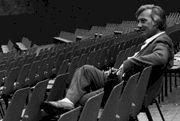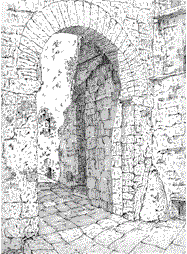

In the paintings that Nino Gorni exhibits at Palazzo Patrizi, Accademia degli Intronati, tradition is not upheld by a mere exercise in composition or by the canons of rational proportion aiming at empty aesthetics. On the contrary, it is a view of the everyday portrayed at a level of understanding which can be immediately grasped even by the uninitiated. However, Nino Gorni, always tries to go beyond that which is apparent to the eye, even when painting portraits, that most limiting of genres of the artist's ability. Nino underscores the furrows of time on the faces of the aged, even to the point of bringing his subject to surrealism, and thus achieving his own very personal type of portrait. His objective is to communicate by means of objective perception without, however, surrendering the prerogative of creative freedom. For this alone translates the human figure from factual recording to the broader sphere of poetry.